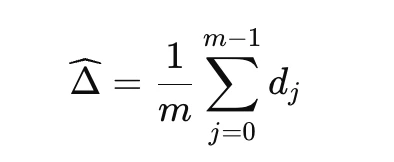When you configure the Predictions tool, you are offered a number of model options. Below is guidance on each to help you choose the right one for you.
How do forecasting models work behind the scenes?
Most forecasting models—even though they use different mathematical techniques—tend to follow the same logic under the hood:
-
Detect trend: They identify the underlying direction of the data over time. “Are sales generally increasing? Flat? Declining?”
-
Detect seasonality: They look for repeating patterns over time (daily, weekly, monthly, yearly). “Do sales always spike in December? Are Mondays usually slower than Fridays?”
-
Detect impact of external drivers: If you provide external factors (price, weather, promotions), they model how they influence the forecast. “How much does a price drop affect sales? Does a holiday increase demand?”
-
Use patterns to predict the future: When trends, seasonality, and external factors are understood, the model projects them forward to make future predictions.
What forecasting models does Predictions support?
When configuring Predictions, you can choose between the following options:
AutoML
AutoML is a feature designed to help you find the most accurate forecast for your data. With just one click, AutoML tests multiple forecasting models on your time series and automatically selects the one that performs best.
For each time series, AutoML generates predictions using several models, including:
-
Prophet
-
AutoETS
-
Seasonal Differencing
-
Linear Regression
-
Moving Average
It then evaluates the accuracy of each model using MASE (for more information, see its Wikipedia page), a robust metric that compares prediction errors to a simple baseline. Accuracy is measured through backtesting on the last 20% of your historical data, ensuring that the selected model is validated on recent trends.
By default, we recommend using AutoML. It offers the simplest and most reliable way to select the best forecast automatically, without requiring technical expertise.
 Note
Note
AutoML takes longer to compute, as it needs to run and evaluate multiple models for each time series to select the most accurate model.
Prophet
Prophet is an open-source forecasting model developed by Meta, designed to handle seasonality, trends, and holiday effects. For more information, see the official Meta documentation. By default, we recommend using Prophet, as it handles a wide range of seasonal patterns and trend shifts effectively, making it a strong choice for most business forecasting scenarios.
 Pigment Academy
Pigment Academy
- For an overview of forecasting with Prophet, watch this Pigment Academy film.
AutoETS
AutoETS is an open-source model based on the same logic as the native FORECAST_ETS function. It automatically selects the best-fitting ETS model for your data. It optimizes the smoothing parameters—alpha (level), beta (trend), and gamma (seasonality)—to minimize forecasting error, without requiring any manual tuning. For more information, see the official documentation.
 Pigment Academy
Pigment Academy
- For an overview of forecasting with AutoETS, watch this Pigment Academy film.
Seasonal Differencing
Seasonal Differencing is a built-in model that computes the mean of differences between corresponding seasonal periods and assumes this difference will persist into the future.
Our model uses the classical seasonal differencing approach where it:
- Calculates recent seasonal differences

where:
-
T = index of the last observed data point
-
s = seasonal length (e.g., 52 weeks)
-
m = moving average window
-
- Takes the mean of these differences as the forecast increment

- Applies this constant difference to smoothed seasonal patterns

where:
-
ỹ = smoothed seasonal pattern from the last season
-
s(h) = position within the season for forecast step h
-
k(h) = ⌈h/s⌉ = number of seasons ahead
-
This is a much more straightforward and robust approach than regression, especially for shorter time series where trend estimation might be unreliable.
